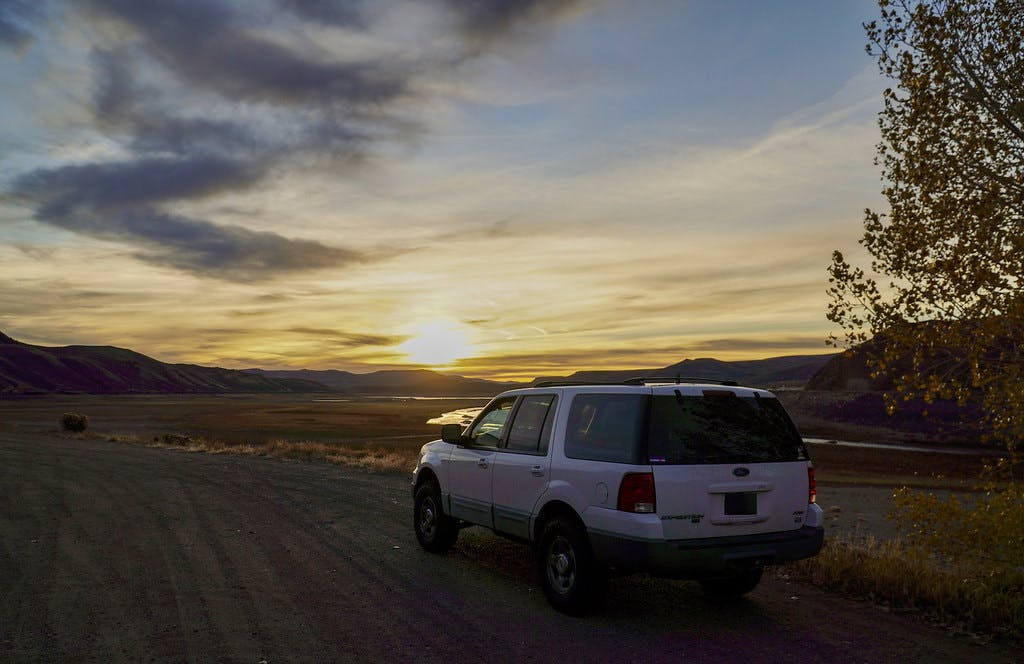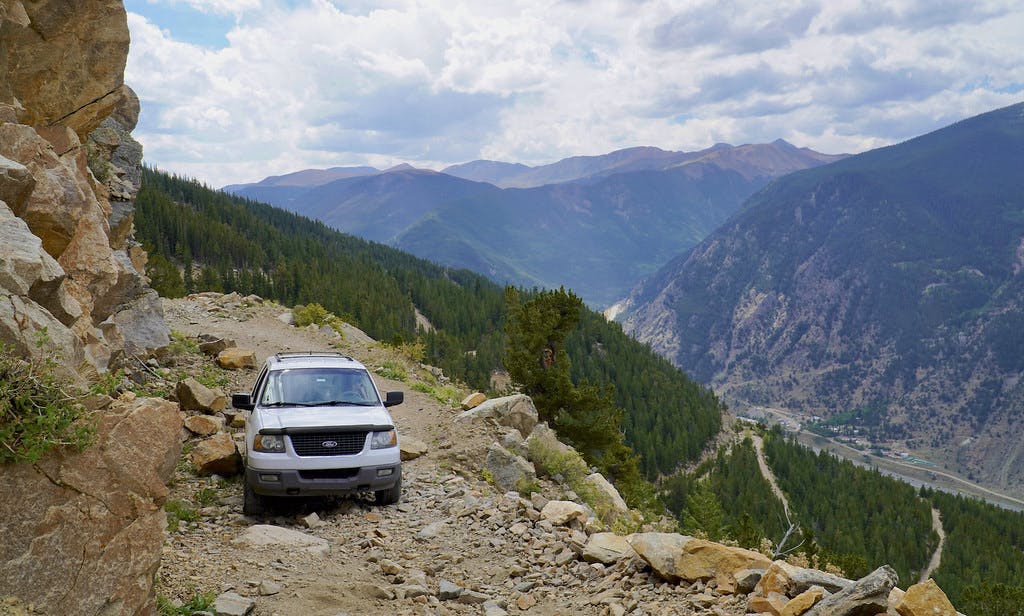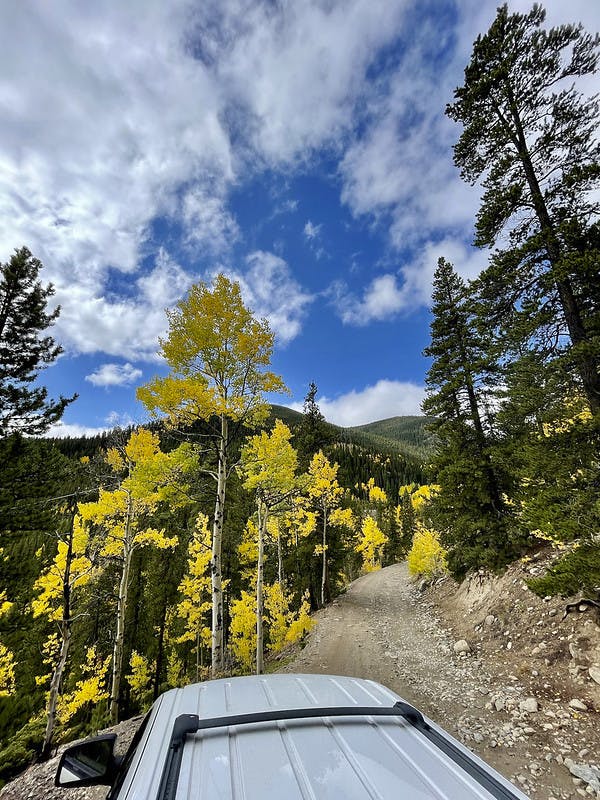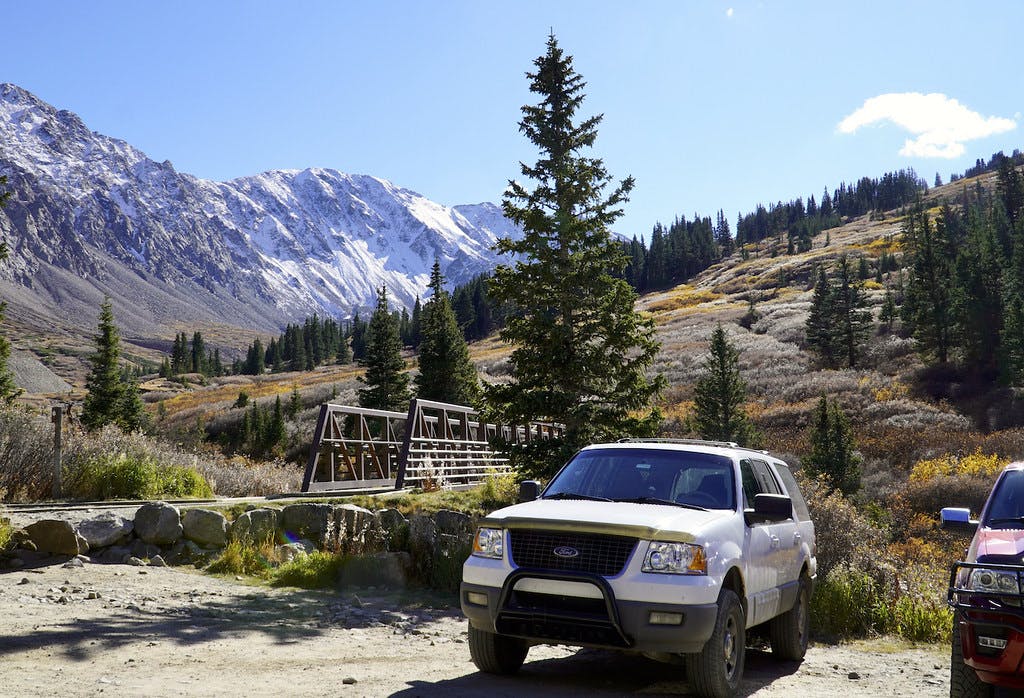My Car Camping Setup
When I was 15 and just beginning to drive on a learner's permit, I remember thinking an SUV would be the coolest. So much room! For whatever you want! And that height off of the road? They just looked awesome. Of course, when I mentioned this to my dad as reasoning for why I wanted an SUV as my first vehicle, he let me know that a bigger car meant bigger costs, bigger replacement pieces, and a bigger and more expensive to fill gas tank. My request wasn't reasonable as a teenager driving around a crowded metropolitan area, and I didn't even realize it.
I wound up buying my dad's '98 Subaru Forester from him and driving it until the transmission died. After that car, I took out my first loan for an '03 VW Passat, and when that was totaled by a taxi driver rear-ending me at a red light just a few months later, I replaced it with an '07 Toyota Camry Hybrid purchased on Craigslist. All this to say, I didn't get that SUV I was asking for until 2020, when my boyfriend's family decided to sell their '03 Ford Expedition and I just happened to have the cash to buy it. And you know what? 15-year-old Kylie was right, there is a ton of room in this thing! So much so that I've got a cozy car camp setup going. Between a foam mattress, insulation panels that double as blackout curtains, and a battery-powered lighting setup, sleeping in the car is comfier than the fancy tent setup I use the rest of the time.
Why Car Camp
Car camping can be a solid option when there isn't reliable ground to put a tent on, like off of a rocky road in an alpine environment. If there is a "no camping" sign, however, that means the area is either too heavily trafficked or impacted to support camping. It is important to respect these closures and find another place to camp, even if you are sleeping in your car.
Opting to sleep in the car instead of a tent is also a nice choice when temperature are below 20℉/-7℃. You can carry more weight in blankets if you don't need to carry them on your back, and handmade insulation panels can be easily cut from a roll of the materials.
There are plenty of benefits to car camping, but there are downsides to consider as well.
 Watching the sun set over Gunnison Reservoir in Curecanti Recreation Area.
Watching the sun set over Gunnison Reservoir in Curecanti Recreation Area.Benefits to Car Camping
- Less cleanup! When camping, you need to set aside a portion of your morning to deflating your sleeping items and breaking down a tent. The same cleanup is not required when you're sleeping in your car, and depending how big of a vehicle you drive you might not need to break down any of the sleep setup to get going in the AM.
- A sense of security. A moose can't trample you if you're sleeping in a metal box. It's not easy for a bear to break into your car, but that doesn't mean you should be comfortable sleeping with your food inside of the vehicle. I still tend to stash my bear can outside of the vehicle when in bear country if not just for the peace of mind.
- Warmth! This can be a downside on the hottest of summer nights, but I don't typically recommend car camping in the summer for this reason. Temperatures above a certain level can be sweltering in the car, especially if you don't remember to crack a window or two.
Downfalls of Car Camping
- Overwhelming an area. Fragile alpine tundra is sensitive to cars, and some Off-Highway Vehicle (OHV) roads have suffered from folks taking their 4x4 vehicles further than they should. Alpine basins and desert locations have been damaged beyond repair by off-roading traffic. It's important to keep the 7 Leave No Trace Principles at the forefront of your mind when overlanding.
- False sense of security. At the end of the day, you're still asleep in your vehicle and that can be a dangerous state for someone trying to car camp in a more populated area. Bears are also capable of opening car doors, so if you forget to lock one you could be in for an unpleasant wake up call.
- Exhausting your car battery. If you leave items plugged in to an outlet in your car, or leave an internal light on just a little too long, you could kill your car battery in a remote location. This situation is made worse if you don't have an external source nearby to jump start your car back to functioning. We carry a battery starter just in case this happens.
- Carbon monoxide risk. We know cars emit carbon monoxide gas and we expose ourselves to that by running a car in an enclosed space, but carbon monoxide can leak into the car other ways too. A hole in the floor of your trunk or the body of your car can leak small amounts of CO that aren't realized until you've spent an entire night in your car. It's recommended you keep a CO detector in your car, if not just when you're camping, for this reason.
Accessing 4x4 Areas
As I mentioned, Leave No Trace is important to consider when recreating in the backcountry, but even more so when you're in something as heavy and potentially destructive as an OHV. We put a leveling lift kit on my Expedition so I can take it to more difficult 4x4 areas (raised my clearance from 8.9" to 11.1"), and it's made a significant difference.
One of the most difficult roads I drove after we put the kit on near the end of summer 2021 was Saxon Mountain, a 7 mile 4x4 road boasting 23 switchbacks that takes you up to an old gold and silver mine at the 11,400' summit. I was grateful for the additional clearance when we took each of those 23 hairpin turns, some of the obstacles were daunting at first site but the Expo handled them with ease.
 Gaining the switchbacks above Georgetown, I-70 visible on the lower right.
Gaining the switchbacks above Georgetown, I-70 visible on the lower right.The most harrowing point along this route came near the top of the switchbacks, before Georgetown leaves your view with 2.2 miles remaining to the summit: a sharp rock marks the wall to your right, and a small boulder marks the edge of the road to your left before a steep, 1800' drop-off just beyond it. This road leading up to this narrow crossing is steep and quickly drops off on the other side, making it a more threatening challenge than something without this additional hindrance might be.
When driving these rougher roads, it can be helpful to have a passenger along for the ride so they can spot you on these more challenging sections. I was grateful to have Kyle with me on this trip for this reason, he helped me get through this tight spot so we could move on to finally gain the summit.
When we got to the top on that Saturday in September, we found the cell phone tower workers there: drinking beer and taking in the views. They were on a many-months-long assignment to build and update the tower behind the old mine, and not sure when they would be allowed to return to their homes and lives in the front range. We had a fascinating conversation while they showed us a better view of the valley below from the other side of their construction site before we drove home down the Idaho Springs side of the mountain.
Resources for Finding OHV Roads and/or Car Camp Sites
I don't necessarily seek out OHV roads as much as I need to travel on them to get to a trailhead or campsite I am trying to access. If you want to finish the Colorado Centennials, you're required to hike or drive at least a dozen 4x4 roads. According to 14ers.com, only 21 of these peaks are accessible via paved parking lot. The rest demand a simple dirt road approach at the least, a rough OHV crawl at the worst. Lake Como is one of the more extreme examples of the bad end of that spectrum, with infamous features like 'Jaws I' and 'II', known for trapping even the most capable of Jeeps.
As for finding car camping sites, the same website I linked above is a great resource for determining what kind of camping I might be able to do at or near a trailhead. When I'm not evaluating a site for a climb, I like to look at this free campsite finder as a starting point. If I can't find any sites that suit my needs there, I'll look up my intended area on Google Maps and check the satellite view for viable sites within a certain perimeter. The official sites for State and National Parks typically have helpful information for figuring out where you might be able to stay nearby, and whether you should use a tent or car.
 Offroading around Argentine Pass.
Offroading around Argentine Pass.Gear
In addition to an emergency bag, I keep a selection of everyday items in my car regularly. Some of the more valuable items are only rotated into my car when I'm headed our for a longer trip or during a snowstorm. In Colorado, it's not unlikely for I-70 to close for a mudslide, avalanche, or just an issue with one of the tunnels, so it can be helpful to have items on hand in case you do get stuck on the wrong side of a mountain pass.
Everyday Items
These items, for the most part, hang out in my emergency duffel or console.
- Individually labeled clear gallon bags of: pre-wrapped utensils (the kind you would get with a carryout order), napkins, tissues, and extra face masks
- Extra hair ties
- Two pens and a tiny book of blank paper
- Switchblade
- Multi-pliers
- First-aid kit, extra band-aids
- Single-use hand warmers x2, toe warmers x2
- Small quick-drying microfiber towel
- Hand sanitizer
- SPF 40+ Sunscreen
- Extra cables
- USB-C
- Lightning x2
- Micro-USB
- Smart watch chargers
Sleep Setup
We take these items with us if we plan to car camp. I've taken a selection of these to sleep in Kyle's slightly smaller car as well. Otis, my dog, gets his own sleeping bag and blanket if he's with us.
- Full-sized memory foam mattress (from Amazon)
- Liners and sleeping bags if not sheets and a blanket
- Big Agnes mtnGLO battery-powered camp lights
- Handmade insulation panels (created using materials from Amazon)
- 240kWh Portable Jackery (with the solar charging panel that recharges it if we're traveling over multiple days in the summer)
- weBoost Range extender (registered with Verizon, purchased from Amazon)
 Parked at Stephen's Gulch, Mount Edwards visible in the background.
Parked at Stephen's Gulch, Mount Edwards visible in the background.Learn More
Car camping can be a great way to enjoy the outdoors. You can learn more about practical and less impactful ways to car camp at the following websites:
- Sustainable Car Camping Tips by TripIt
- 10 Eco-Friendly Overlanding Tips by Overland Discovery